The most challenging step in the process of delivering AHSS sheet to the press is straightening. We see this as the biggest need in the industry today, and the biggest shortcoming of the equipment that’s been manufactured and in use by stampers during the last 30 years or so.
Research shows that AHSS is the fastest growing material in automotive applications. This growth is a direct result of steel’s performance flexibility, as well as its many benefits including low cost, mass reduction capabilities, safety attributes, reduced greenhouse gas emissions and superior recyclability.
AHSS offer complex steel chemistries and thermo-mechanical processes for improved strength and ductility, yet challenges stampers with greater spring back, higher yield strengths, thinner materials, and tougher formability issues. Over the past decade, stampers have gained a knowledge base helping them to deal with these challenges and have applied this to the actual die and stamping process. However, to successfully process AHSS, there is a need to look at every aspect of the stamping line – including the press feeding operations and, in particular, straightening.
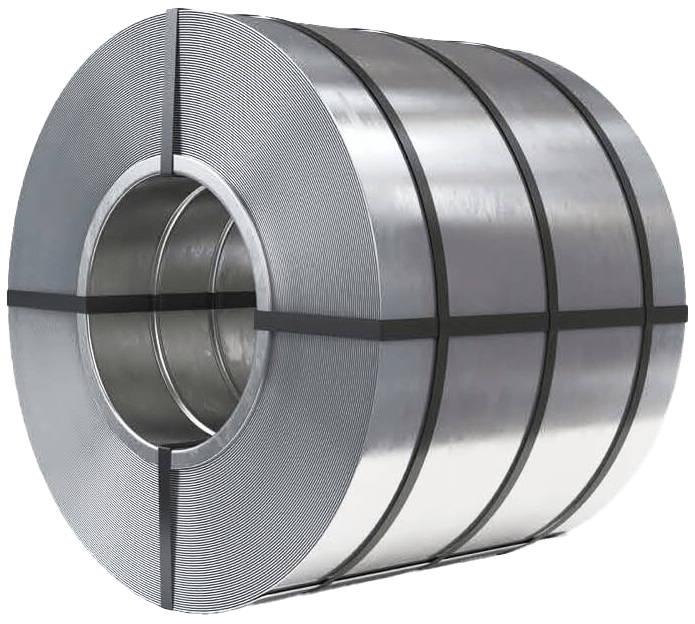
The 2014 average AHSS use in North American produced light vehicles is 254 pounds and expected to nearly double to 483 pounds by 2025. Originally published in the “Advanced High-Strength Steels Application Guidelines, v6”
The purpose of straightening in a typical coil feed line is to prepare the material shape so that an acceptable finished part can be produced from the flattened steel. The requirements for straightening vary depending on the material defects present, the requirements of the die, or the finished part requirements. In the case of forming operations, it may only be necessary to flatten the material sufficiently to pass easily through the die. If blanks are being produced and stacked for further processing or flatness-critical parts are being stamped, then flatness in the continuous coil is extremely crucial.
Straightening is most commonly accomplished by bending the strip around sets of rollers to alternately stretch and compress the upper and lower surfaces to exceed its yield and erase coil set. Then it is reformed in a way so that both surfaces end up the same length after spring back, resulting in flat material. When straightening AHSS greater forces are required, and this influences the straightener design including choice of components, materials and power sources.
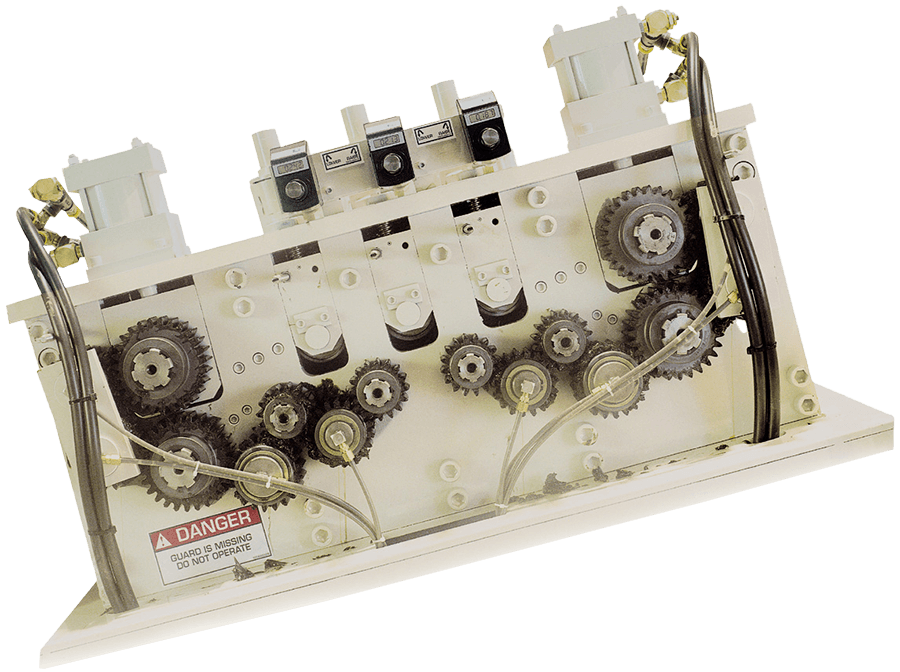
A traditional straightener head with a slide block arrangement for upper rolls and a standard cluster gearing for driving the lower rolls. It straightens coil by bending the strip or coil around sets of rollers to stretch and compress the upper and lower surfaces alternately to exceed its yield and remove coil set.
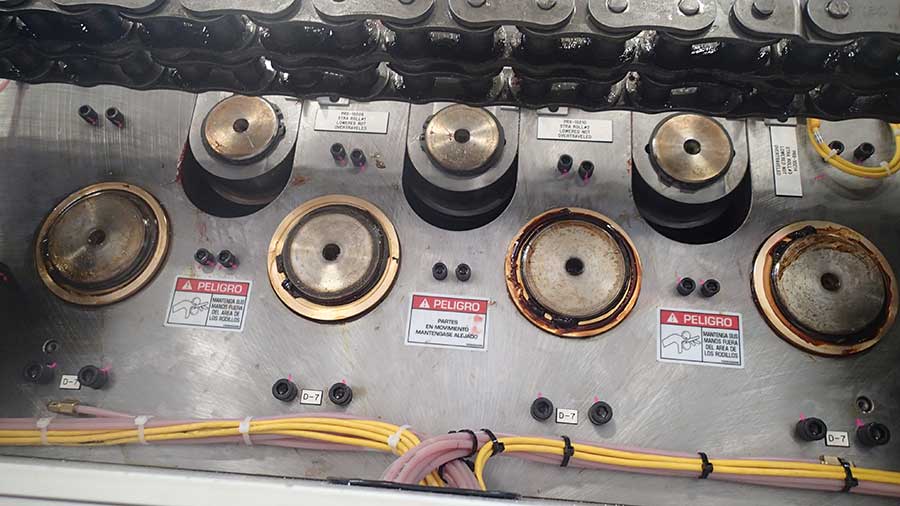
Processing of AHSS requires increased roll depth penetration.
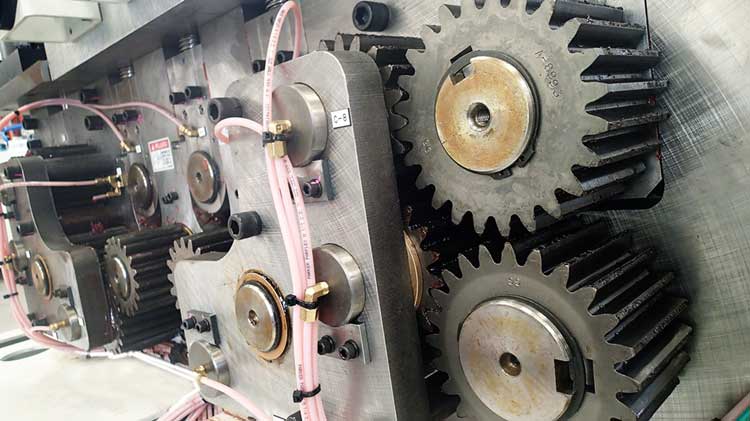
Wider gear face widths required for straightening advanced material.

FEA of conventional straightener roll, back-ups and support bridge. Image shown with 20,000# of force applied resulting in .030″ deflection.
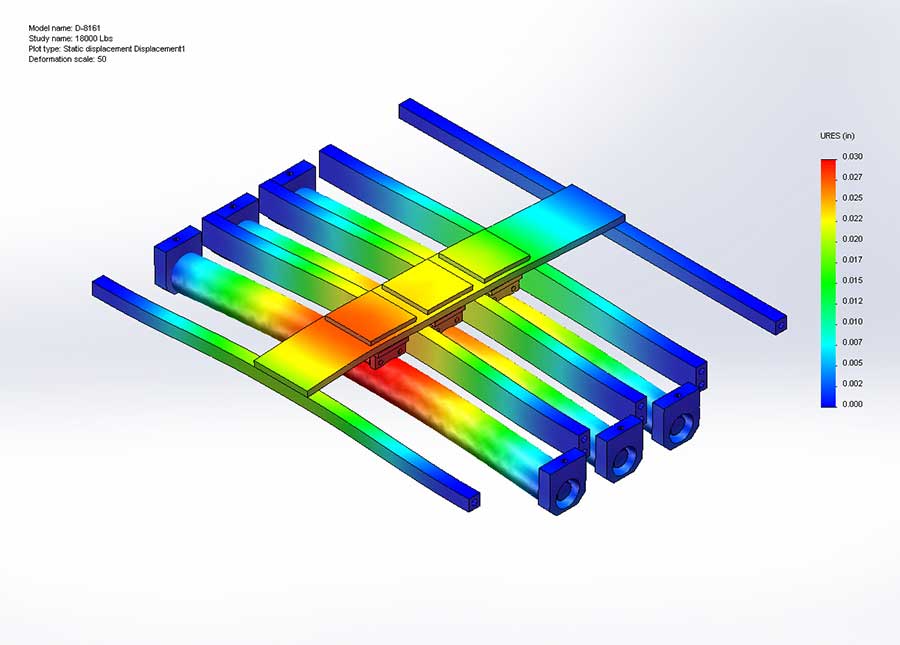
FEA of COE Series 406 straightener roll, back-ups and support bridge. Image shown with 20,000# of force applied resulting in .005″ deflection.
In general, processing of AHSS requires greater motor power and torque capability to effectively pull the material through the straightener. The higher tensile strength steels require higher horsepower to straighten the material to overcome the higher yield strengths. However, calculating the correct power is based on numerous factors, including:
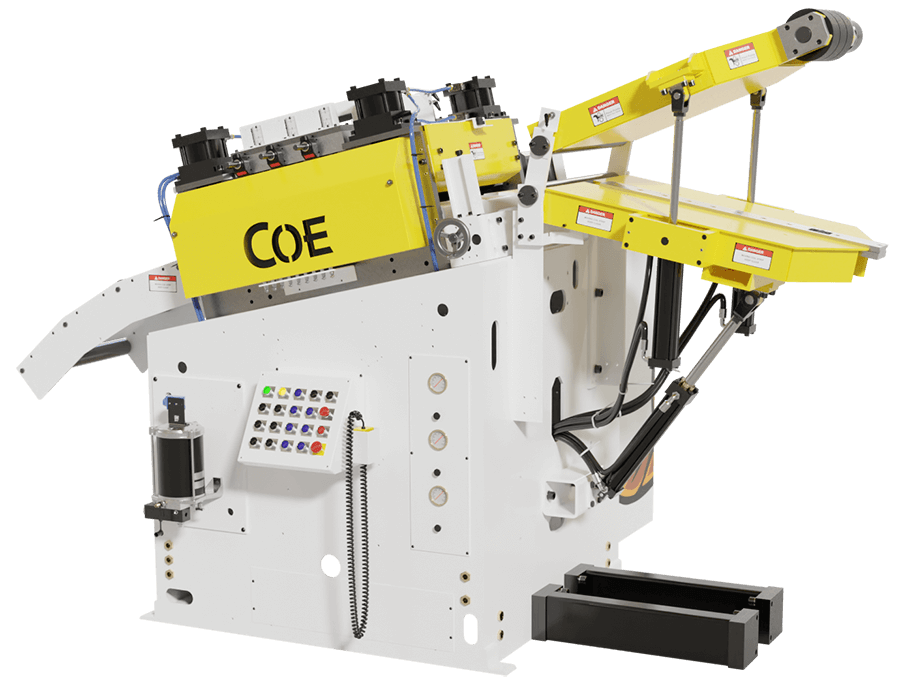
A standard COE straightener, capable of processing a wide range of materials including AHSS.
Each application has unique considerations of the above variables and can result in an almost infinite number of outcomes based on the combinations of these variables. To effectively design the straightener for any particular application requires tools that can analyze these requirements.
COE has been supplying straighteners for the processing of increasingly stronger steels for nearly three decades, establishing a knowledge base on the most effective methodologies. When seeking a supplier to help you process AHSS, look for proven experience in:
The bottom line — before you make a commitment to a supplier, request documentation that can demonstrate that the proposed machine is suitable for your processing needs. When in doubt, ask questions regarding the machine design using the above considerations as a guideline for the proper straightener specification for AHSS applications.